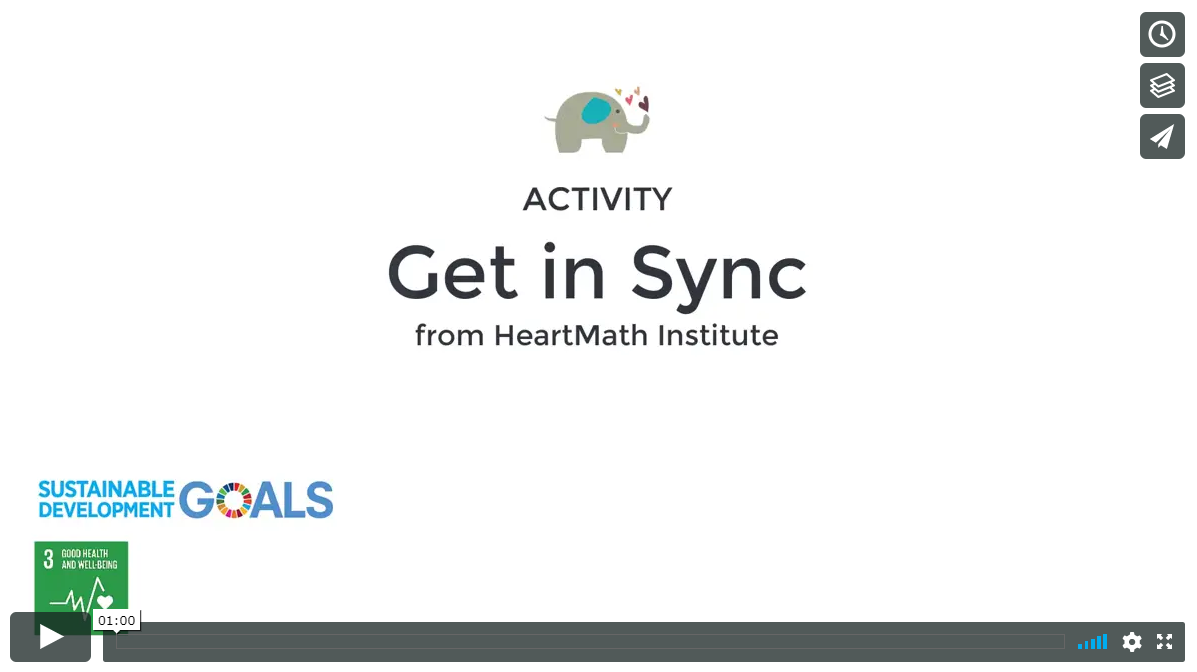HeartMath Get in Sync

We are now going to learn a simple tool that helps with problem solving. By learning to get more in sync--when we are functioning at our best - our thinking brain is more active than our reactive brain--we can more easily come up with possible solutions. To begin with, choose a small or modest-sized problem or issue. It does take practice to become good at this skill.
Goal
Learn more about a simple tool to help you better solve problems.
Resources
- Colored pens/pencils
- Handout (Letter Size) click to download
- Handout (A4 Size) click to download
- Activity Instruction Sheet (optional) click to download
Instructions
Pick up a Get in Sync problem-solving handout from the table.
There are 3 steps to this tool.
-
- Step One: Write down or draw an issue or problem you are experiencing.Make it small or medium-sized, not a big issue.
- Step Two: Practice the Get in Sync tool. Shift your focus to the area of the heart, breathe more deeply and try to activate a warm feeling like appreciation for someone. After 30-45 seconds, ask yourself what is the best way to handle this problem or issue?
- Step Three: Write down or draw your answer.
As an option, when finished, try to identify what you were feeling before you used the Get in Sync tool and what you felt afterwards. Write down in one or two words a feeling word such to describe what you felt (under #1 beforehand and #3 afterward). if comfortable, share your results with other people.
Discussion
- How often do you stop and pause when upset or disappointed? How can it help?
- Why does the brain work better when we pause, breathe more deeply and then ask for solutions or better ways to handle stressful situations.
Extensions
Invite participants to write a story, letter, or a journal entry describing how they became clearer on ways to handle a stressor.
Activity Source
Jeff Goelitz, HeartMath Institute

About this activity…
AGE:
SDG:
GROUP SIZE:
EQ AREA:
SPECIAL COLLECTIONS:
TIME:
4-10 minutes
DEMO VIDEO:


0 Comments